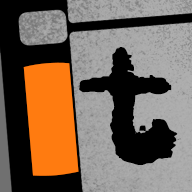Vince...are you releasing this on film, web or DVD? If DVD is the answer and you're looking to screen it where DVD is the delivery method. It will end up at 60i. Everything done to it will be a mathematical approximation of the 24p no matter what.
I like to shoot my XL1s at 30p (f in canon's little world). to get a progressive feel to the footage, but even then, it's stuffed onto a 60i tape (so is 24p). The extra work to re-conform the 60i back to 24p for editing just doesn't fit my workflow or delivery method. And I don't see that enough difference between shooting 24 and 30 progressive to account for the extra time.
Taking 60i and stuffing it down to 24p doesn't look good to me, it's all a rough approximation of motion that never holds up under scrutiny. Basically, the processor has to take apart the fields of the 60i image (at 50% resolution) and figure out what moves from field to field, then calculate (read: fake) motion blur to account for the motion between one field and another.
The film look lies in; lighting, makeup, costume, location choice, framing, set dressing, acting, casting, editing, camera movement... none of these things is frame rate. I've seen film that looks like digital through the misuse of these elements... I've seen 60i video that I couldn't tell (or didn't care) wasn't film based on the use of these things.
My advice:
1) always shoot 30f (unless you intend to use slow mo with the footage
2) backup and zoom in
2a) use ND filters to get the iris open almost to full (not all the way as there's some color fringing at the extremes) to blur the background a bit and compress space
2b) put more space between the subject and the background to help with this
3) put the camera on a dolly and/or a crane to show off the 3-d ness of the space in front of the lens
3a) does the environment need some smoke to make the room look deeper?
4) study what really makes movies look like movies... hint: it has jack to do with frame rate.
5) get the lines in the script into camera, then do 2-5 more takes of each setup just to let the actors explore the parts more.
6) you did get actors right? not just friends (no offense to your friends)... unless your friends are seriously studying acting as a craft.
7) take the time to look at the frame before shooting (add 1/2 hour to each setup so you can do all the little things) Is the background or foreground too distracting, too empty, colored incorrectly? These little things matter. Are your actors moving too jerky or suddenly for the camera to pick up (Bruce Lee actually had to slow down so the camera could pick up his punches)? Are the movements fluid and STAR looking?

Is the footage you're getting in camera good to edit with? Are you giving yourself options in the edit bay? Different pacing, different amplitude, different attitudes?
9) When editing, screw the script, does the next shot move the story along, is it necessary? When watching the edited piece do you "FEEL" the next cut and it isn't there? Have you had a group of critical friends watch the piece with a timecode at the bottom of the screen and notebooks in hand so you can beat the hell out of the first final edit?




 Is the footage you're getting in camera good to edit with? Are you giving yourself options in the edit bay? Different pacing, different amplitude, different attitudes?
Is the footage you're getting in camera good to edit with? Are you giving yourself options in the edit bay? Different pacing, different amplitude, different attitudes?